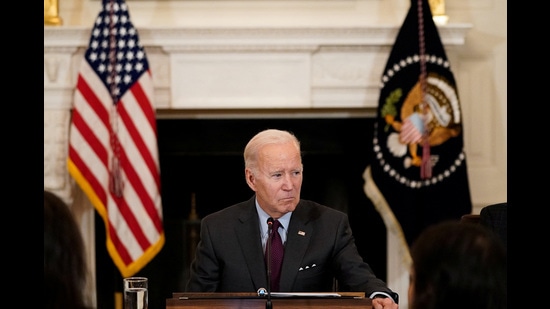US needs to pick its India envoy
For 20 months, the United States hasn’t had an ambassador in Delhi. This hurt diplomacy and must change
For the last 20 months, since Kenneth Juster left India in January 2021 after completing his tenure, the United States (US) has not had an ambassador in India. It is the longest stretch that Washington has not had a top diplomat in New Delhi. There is a diplomatic vacuum at a time when the two countries are marking 75 years of their diplomatic ties. It has happened even as top American leaders, from President Joe Biden downwards, don’t stop lauding the partnership with India as one of the most consequential of this century, spanning all domains. And even as international geopolitics is in turmoil, convergences are accompanied with divergences, and the relationship requires constant diplomatic care and management, the US embassy in New Delhi has been left effectively headless with a series of ad hoc in-charges.

The problem is simple. President Biden nomin-ated a close confidant, Los Angeles (LA) mayor Eric Garcetti, as his man for India. Mr Garcetti was on the committee that selected Kamala Harris as vice- president. Considered a rising star in the Democratic Party, with presidential ambitions of his own, Mr Garcetti’s direct access to the White House made him a formidable nominee. But in the American system, the Senate has to confirm the nominee. Credible reports suggested that Mr Garcetti turned a blind eye to allegations of sexual misconduct against a top adviser in his mayoral office. While Mr Garcetti has said he was not aware of the misconduct, the accusation not just galvanised Senate Republicans to oppose his candidature but also led to a loss in Democratic support in a Senate that is tied 50:50. Without the numbers and confirmation, Mr Garcetti continues as LA mayor, while Roosevelt House — the US ambassador’s residence in Delhi — waits for its next long-term occupant.
America’s dysfunctional political system of confirmations or even the charges against Mr Garcetti is a matter for the US to deal with. What matters for the bilateral relationship is having an ambassador in Delhi. The White House should have either invested its political capital and got Mr Garcetti through the Senate process or it should have found an alternative candidate. Waiting for the numbers to suddenly add up, while keeping its diplomatic relationship with India in limbo, is a blot on American diplomacy. It has shifted a heavier share of the load of managing day- to-day ties on to the Indian side. It has led to avoidable controversies when American officials have overreached. It deprives the US system of proper daily feedback. Since the top leadership of both countries is deeply invested in ties, and India has an able ambassador in Washington DC, the big strategic picture hasn’t got affected and engagements have only deepened in the last two years at all levels. But the absence of an ambassador reflects poorly on America’s commitment to the relationship. President Biden needs to take a call. Instead of worrying about what withdrawing his nomination would mean for Mr Garcetti’s political future, the American leadership should either get its act together in the Senate or find a new nominee and push the candidate through the legislative process as soon as possible. India has been patient enough.
All Access.
One Subscription.
Get 360° coverage—from daily headlines
to 100 year archives.



HT App & Website






